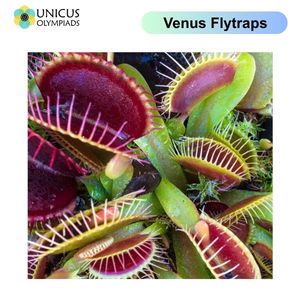

Carnivorous plants are fascinating organisms that have evolved unique methods for capturing and digesting insects and other small animals. These plants are adapted to grow in environments where soil nutrients, especially nitrogen and phosphorus, are deficient. By supplementing their nutrient intake with animal prey, they thrive in nutrient-poor conditions. In this section, we will explore how these plants capture and digest prey, with examples of well-known species.
The Venus flytrap (Dionaea muscipula) is one of the most famous carnivorous plants. It has a unique mechanism for capturing and digesting prey, such as insects and spiders. Here's how it works:

In addition to the Venus flytrap, there are several other species of carnivorous plants that have developed unique methods for capturing and digesting prey. These plants are found in a variety of environments, ranging from tropical rainforests to temperate wetlands.
Carnivorous plants have developed the ability to capture and digest insects due to their growth in environments where the soil is nutrient-deficient, particularly in nitrogen and phosphorus. Here’s why they eat insects: